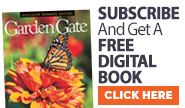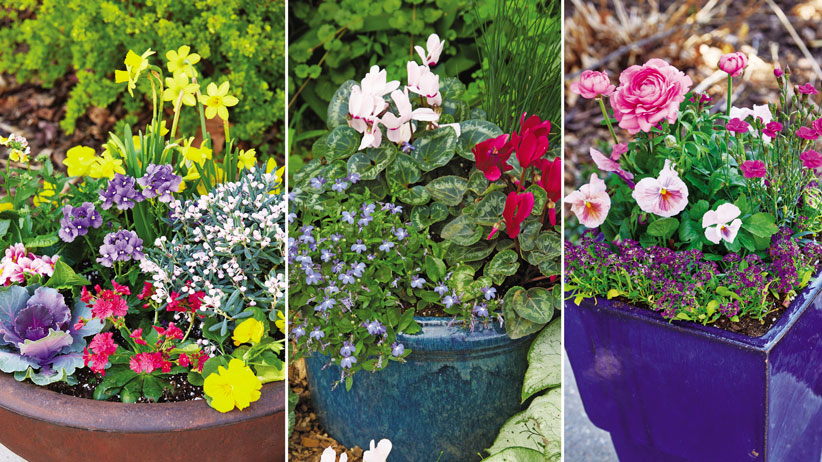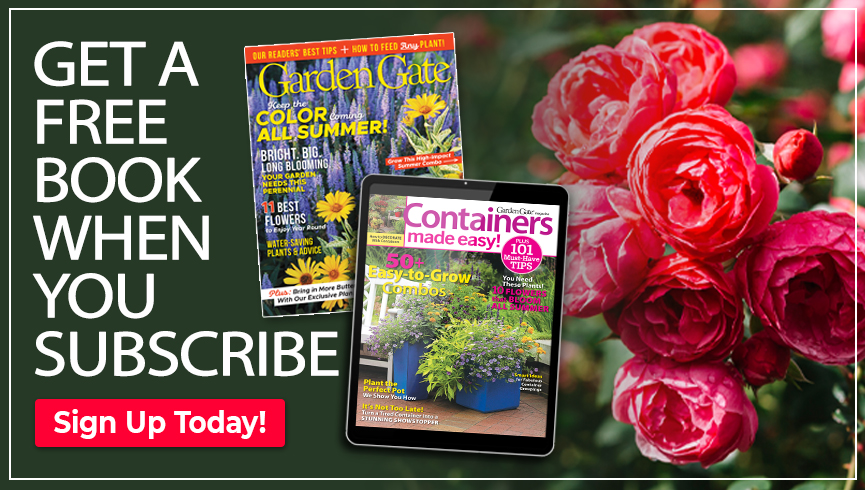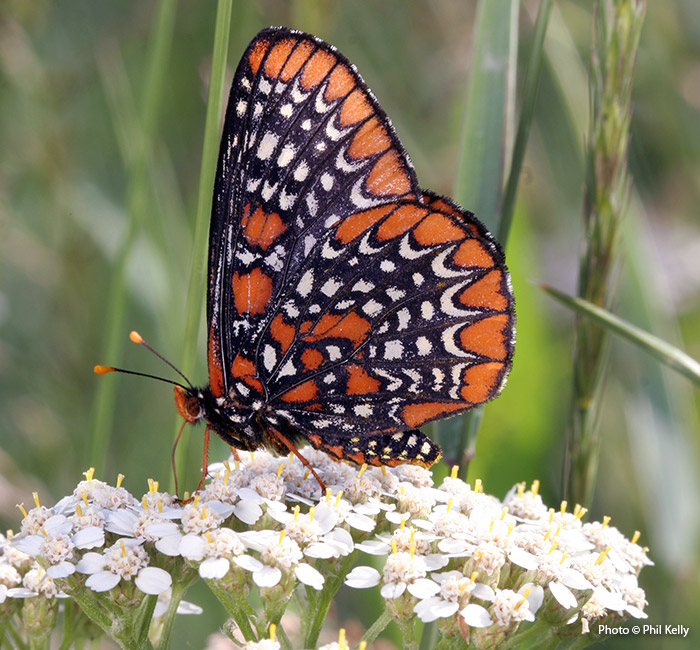
Evolution of flower shapes
Flowers are what attract people to a plant — their color, their shape, their scent. Poets have waxed on about flowers, lovers have wooed and been wooed with flowers, and Victorians created a complicated code of meaning ascribed to flowers. But the shape of flowers is even more artful than one might think. The architecture of the bloom reveals a secret: Flowers evolved their shapes to accommodate their specific pollinators.
Form meets function
Tony Avent of Plant Delights Nursery in Raleigh, North Carolina, has long been fascinated with flower forms. But while flower forms are beautiful, they are also functional. Tony says that flowers have garnered a lot of interest because of their function in nature. “Flower forms correspond to pollinator type,” he says. In the act of pollination, both partners benefit: The pollinator harvests nectar and pollen from the flower; the plant gets pollinated so it can produce seeds, ensuring its next generation of plants.
The attraction of shape
As a kid, Tony wandered through the woods in North Carolina and the strange flower form of the native jack-in-the-pulpit first captured his eye and imagination. Jack-in-the-pulpit is one of his favorite plants — his mail-order nursery offers both native and exotic varieties. What he didn’t know as a kid was that this uniquely shaped flower had formed to meet a function: to attract and accommodate the fungus gnat pollinators that would ensure more plants would rise from the forest floor (enchanting future generations of children wandering through the woods). If you love to offer a floral buffet for pollinators, keep reading to see some fascinating flower forms and their pollinator sidekicks.
You Might Also Like:
Meet 5 Common Pollinators
Blue Flowers are Best for Bees
Design a Garden to Attract More Pollinators
Pollinator Garden Plan
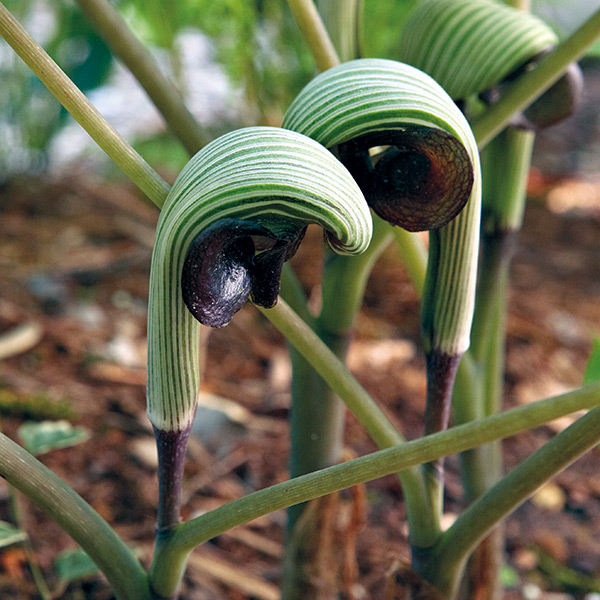
Revolving door
“Jack-in-the-pulpit is the original transgender plant,” Tony says. Most are male when young, then they switch to female (and can switch back to male). Jack-in-the-pulpit is pollinated by fungus gnats that are lured into the hooded spathes by the (false) odor of fungus. The male jack-in-the-pulpit has evolved to offer gnats an escape hatch out of the flower (so that they leave with pollen). The female plants don’t have the same exit, so once inside, the gnats reside there until they die; the plant’s mission of pollen delivery accomplished.
- Jack-in-the-pulpit Arisaema triphyllum
Perennial; white, cream, brown, purple or green flowers in spring; part to full shade; 12 to 36 in. tall, 12 to 18 in. wide; cold-hardy in USDA zones 4 to 9
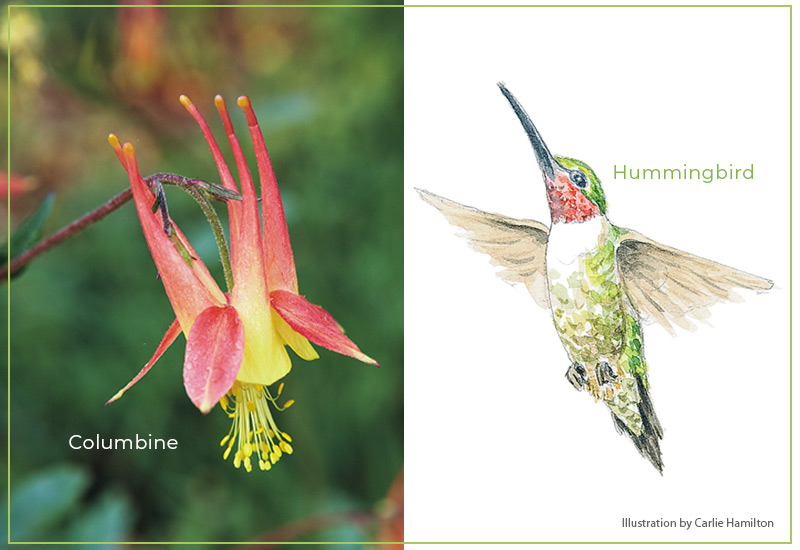
Customized nectar spurs
Columbine’s flower shape almost defies description: it’s round, deep-pocketed, and swoopy. But each curve and dip has a reason. This perennial has nectar spurs that extend from the base of its flower petals. Each species produces spurs of different lengths to accommodate the specific species of pollinator. This is called “adaptive radiation” — evolutionary biology in action. The end result is that the specific pollinator — whether bee, hummingbird or hawkmoth — can gain access to the flower’s sweetness.
- Columbine Aquilegia spp. and hybrids
Perennial; pink, red, white, blue, purple, yellow, black or bicolor flowers in early to late spring; full sun to part shade; 5 to 36 in. tall, 6 to 24 in. wide; cold-hardy in USDA zones 3 to 8
You Might Also Like:
4 Types of Hummingbirds
Hummingbirds Garden Plan
10 Plants to Attract Hummingbirds to Your Garden

Showy stamens
Waving stamens are like little “lunch served” signs to pollinators, such as bees, who land on the petals and get a pollen coating in the process. The stamens, which are the male parts, are covered with pollen. Clematis and the other plants in the list below have beautiful stamens that stand up over the base of the flower.
- Clematis Clematis spp. and hybrids
Woody vine; purple, pink, blue, red, white, yellow, green or bicolor flowers in spring, summer or fall, depending on species or cultivar; full sun to part shade; 6 to 10 ft. tall, spreading; cold-hardy in USDA zones 4 to 8 - Japanese anemone Anemone spp. and hybrids
Perennial; white and pink blooms in late summer to fall; full sun to part shade; 36 to 48 in. tall, 18 to 24 in. wide; cold-hardy in USDA zones 4 to 9 - Hellebore Helleborus spp. and hybrids
Perennial; white, green, burgundy, ivory, rose or pink flowers in late winter to early spring; full sun to part shade; 36 to 48 in. tall, 10 to 36 in. wide; cold-hardy in USDA zones 6 to 9
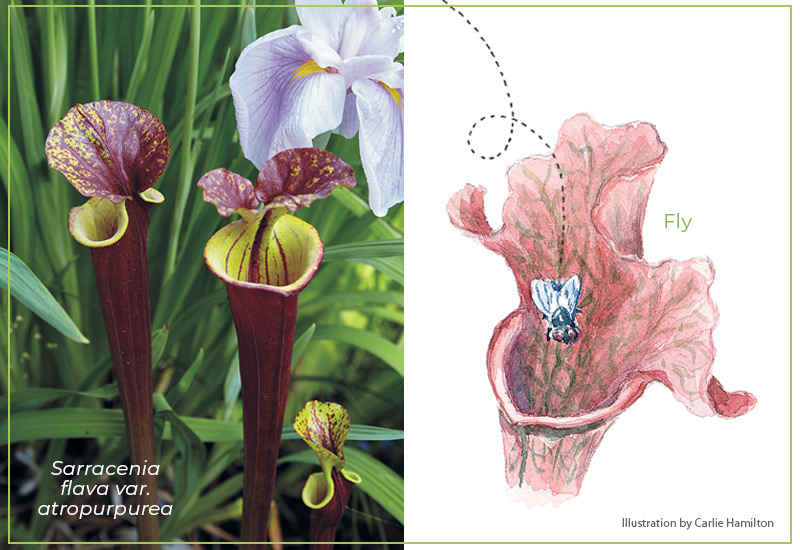
A deadly draw
Some flowers feature a beautiful form with a deadly function: The enticing tubes of the pitcher plant lure in insects but their slippery sides don’t allow the insects to leave, providing a meal for the plant. (The flowers are positioned to lure in flying pollinators while their traps attract prey.) Venus flytrap features a form that is like a hinged trap. Voodoo lily’s flowers smell like rotting flesh, fooling flying insects, such as flies, to come eat.
- Pitcher plant Sarracenia spp.
Perennial; red, yellow, purple, burgundy or green flowers in spring; full sun to part shade; 4 to 24 in. tall, 12 to 24 in. wide; cold-hardy in USDA zones 5 to 9 - Venus fly trap Dionaea muscipula
Perennial; red and green flow-ers in spring; full sun to part shade; 3 to 18 in. tall, 6 to 12 in. wide; cold-hardy in USDA zones 6 to 9 - Voodoo lily Amorphophallus bulbifer
Perennial; pink, ivory or green flowers in mid- to late spring; part sun to part shade; 2 to 4 ft. tall, 3 to 4 ft. wide; cold-hardy in USDA zones 10 to 12

Umbrellalike umbels
Plants that produce flat open flowers, called “umbels,” hold a multitude of tiny individual flowers. These little blooms offer sweet nectar for many pollinators, such as bees, flies and butterflies. Yarrow is an ideal pollinator plant because it provides a veritable smorgasbord of nectar in its flat, flower-filled blooms. Another flat-topped favorite is butterfly weed: It is also the host plant for the larvae of the monarch butterfly, as well as several other beneficial insects, such as parasitoids that lay eggs on or in a host insect.
- Yarrow Achillea spp. and hybrids
Perennial; red, pink, peach, yellow or white blooms summer to fall; full sun; 6 to 60 in. tall, 12 to 36 in. wide; cold-hardy in USDA zones 3 to 8 - Butterfly weed Asclepias tuberosa
Perennial; orange or yellow flowers in mid- to late summer; full sun; 1 to 3 ft. tall, 1 to 2 ft. wide; cold-hardy in USDA zones 3 to 9
You Might Also Like:
How to Harvest and Plant Milkweed Seeds
How to Identify Common Butterflies
Best Flowers for Butterflies
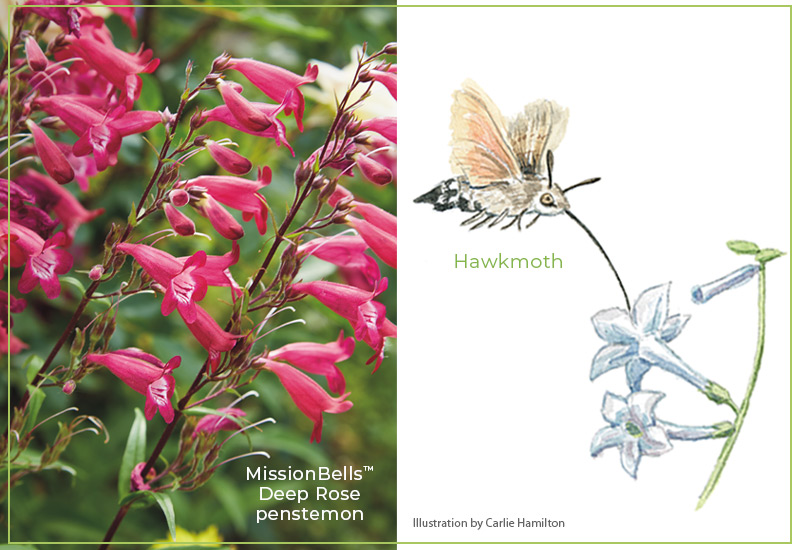
Tubular flowers
Long-tongued bird species, such as hummingbirds, love tubular flowers of members of the penstemon family for the sweet sips of nectar that await. Tubular flowers that also produce scent, such as honeysuckle, attract night-flying hawkmoths, which are the end-of-summer metamorphosis of the tomato hornworm. Although hawkmoths will head proboscis-first to nonscented flowers, they spend less time sipping nectar there, studies show.
- Penstemon Penstemon spp. and hybrids
Perennial; red, pink, orange, purple, blue or white blooms in late summer to fall; full sun to part shade; 4 to 72 in. tall, 10 to 36 in. wide; cold-hardy in USDA zones 3 to 10 - Butterfly bush Buddleja spp. & hybrids
Shrub; violet, lavender, white or purple blooms summer through frost; full sun; 1 to 10 ft. tall, 1 to 10 ft. wide; cold-hardy in USDA zones 5 to 10, heat-tolerant in AHS zones 10 to 1 - Honeysuckle Lonicera sempervirens
Woody vine; red-orange, yellow blooms in late spring and summer; full sun to part shade; 6 to 8 ft. tall, 5 to 10 ft. wide; cold-hardy in USDA zones 4 to 8
